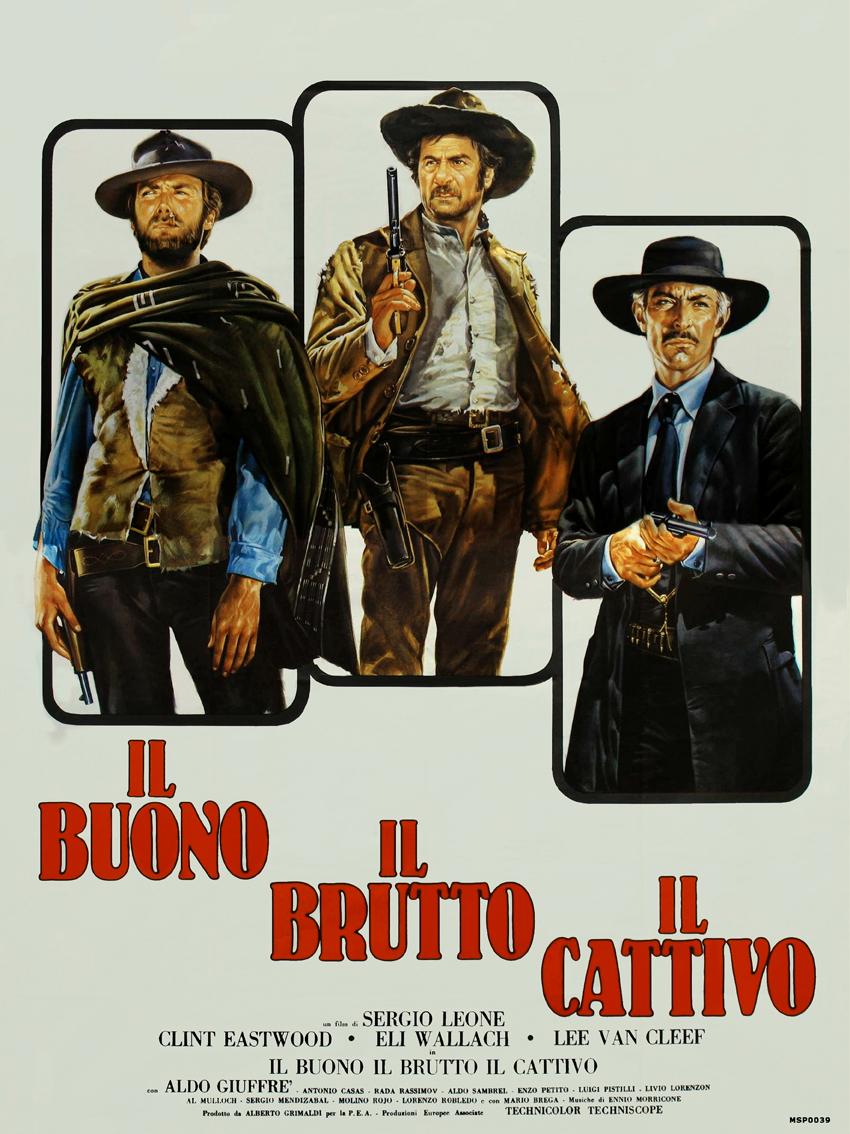Film Review: The Good, the Bad and the Ugly (1966)



Many of the very best of western genre films coming out after WWII have a strange formal lineage that loops around the globe a few times. Hollywood was naturally the leading source of the western as most of the tales were of American origin, but in the years after the war, the waters start to get muddy. Akira Kurosawa, a huge fan of the genre (especially the films of John Ford), adapted it to fit his samurai films. He simply replaced gunfights with sword fights and changed the setting from the American west to feudal Japan. The results are some of the most highly regarded films ever made. It gets interesting when American directors, in turn, saw Kurosawa’s work and began being falling under its influence. In time, a cyclical inspiration loop began to form, with Hollywood influenced by Japan, who had been influenced by Hollywood in the first place. And around it goes.

Somewhere in there (1964 to be exact), an Italian director named Sergio Leone stuck his nose into this loop. With a very low budget, and a Hollywood reject as his star, Leone managed to become one of the most influential artists to ever capture a gunfight. In that year, A Fistful of Dollars was released, thus kickstarting the “Spaghetti Western” genre (Italian produced westerns that took place in the American Southwest). It was, by and large, a remake of Kurosawa’s 1961 Jidaigeki (Japanese period film), Yojimbo, which was, of course, heavily influenced by Hollywood westerns. Next came For a Few Dollars More in 1965, and of course, The Good, the Bad and the Ugly in 1966. These three films came to be known as “The Dollars Trilogy,” but it’s this last one that truly stands out.

The Good, the Bad and the Ugly is an art film. There’s no getting around that. No matter how many desert vistas, six-shooters, horses, or any other genre tropes are thrown in, what Leone has created is one of the most epic and beautiful art films ever made. Yes, it’s clearly a western, but why can’t a western be art? Leone’s film expresses a kind of poetry. This is most noticeable in his use of repetition. Things happen to one character, and then the same thing happens to another, creating a sort of rhyming rhythm. This could also be easily likened to a piece of music—a grand symphony of the largest scale, complete with defined movements. And consider the eyes of each main character and tell me what you see (you’ll have plenty of opportunities). Never have eyes been so expressive and important in a film. Each man’s eyes look different, naturally, but they each also tell very different stories of past experiences and offer different motives for future ones. Leone’s climactic duel is a clinic in restraint and expression. If gunfights can be art (and I believe they can), this one is the Mona Lisa hanging in the Louvre. Pair this with the unforgettable score by Ennio Morricone, and the picture is complete.

At nearly three hours, The Good, the Bad and the Ugly is most certainly grand, but it never gets old or tiresome. There’s an over-arching plot, of course, but it takes its time getting to it, opting to be damned sure we’re well acquainted with each player before revealing their quest. By the time the famous trio finally appear on screen together the film is nearly over, but we know exactly what each is capable of, and what they are willing to do to win the prize. Their journey has been long and has taken them through enough material to fill several lesser westerns. Along the way, Blondie (Clint Eastwood) and Angel Eyes (Lee Van Cleef) have spoken very little, but have revealed themselves through action. Tuco (Eli Wallach) on the other hand, never stops talking and is strangely the most human of the three. Through his incessant cursing and bargaining, his past is uncovered, and his motivations for becoming so “ugly” are nearly sympathetic. But, each man has a code, and they live strictly by it. Even when they appear to be on the verge of breaking it, they don’t. They can’t.

Due to budget restraints and the international nature of the Spaghetti Western genre, the dialogue was often dubbed in after the fact. I’ve always maintained that this is a stylistic plus, at least for this film. First, it’s a motivation to keep dialogue to a minimum (it’s a full ten minutes before anyone in the film speaks, and it’s beautiful), which in turn emphasizes other aspects such as emotion and cinematography. Secondly, the dubbed dialogue transports us into the unknown. It puts a surreal spin on distinguishable genre norms. In a sense, it’s simply goofy—and when combined with the epic landscapes and tense stand-offs, it forces a uniqueness that I find irresistible.

Westerns, like Science Fiction, have the amazing ability to break free of genre trappings to tell larger than life stories with themes that far outreach the apparent simplicity of their form. The Good, the Bad and the Ugly is more than a Western—that moniker alone doesn’t do it the justice it deserves. It’s cinematic work of art, painted in long colorful brush strokes, and with acute attention paid to its details. In the world Leone has created, and in contrast to the one popularized by John Wayne and others, no one is wholly good, bad, or ugly. Shades of grey, supplemented with dirt, sweat, and blood, and greed are both more realistic, and more fun. There is no other film, Western or otherwise, quite like The Good, the Bad and the Ugly, and there likely never will be.
